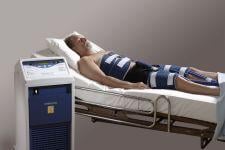
InnerCool Therapies showcased its two next-generation medical device systems designed to provide comprehensive solutions to patient temperature modulation at the 2007 AACN meeting.
Patient temperature modulation is a rapidly-advancing field focused on preserving ischemic tissue and improving patient outcomes following major medical events such as stroke, cardiac arrest and heart attack, as well as in the management of patients experiencing trauma or fever. Internal or endovascular temperature modulation is intended to rapidly cool patients from within their bodies in order to reduce cell death and damage caused by acute ischemic events in which blood flow to critical organs such as the heart or brain is restricted, and to prevent or reduce associated injuries such as adverse neurologic outcomes. External or surface-based temperature modulation is designed to cool or warm patients from outside of their bodies and is intended for use in less acute settings such as in-hospital fever management.
InnerCool’s approach to endovascular temperature modulation makes use of a thin flexible catheter designed to facilitate quick deployment and minimize vascular occlusion – while at the same time accelerating and optimizing patient cooling and re-warming.
InnerCool's RapidBlue system for high-performance endovascular temperature modulation includes a programmable console with an enhanced user interface and a catheter designed to quickly modulate patient temperature in association with surgery or other medical procedures. The RapidBlue system powers InnerCool’s Accutrol catheter, which has a flexible metallic temperature control element (TCE) and a built-in temperature feedback sensor to provide fast and precise patient temperature control.
The RapidBlue console and Accutrol catheter can quickly and accurately modulate whole body temperature without introducing or exchanging any fluid within the body. The system functions by programmably circulating cold or warm saline in a closed circuit within the catheter to either cool or warm its outer metallic surface, which effectively conducts heat out of or into the surrounding bloodstream. The unique design of InnerCool’s TCE, which is both thermally conductive and includes alternating surface helices to promote mixing around the TCE, further optimizes heat transfer and enables rapid patient temperature modulation, even in obese patients. The catheter and TCE have a covalently-bonded heparin coating for hemo-compatibility and the catheter can be readily placed in an operating room or intensive care setting without the need for continuous fluoroscopy. The integrated temperature sensor allows for automated temperature management, and also eliminates the need to place bladder or other patient temperature probes which can be slow to react to changes in core body temperature, and may be uncomfortable to the patient and time-consuming to place.
Other currently-marketed endovascular systems rely on plastic-based balloon catheters that are inflated after placement in the bloodstream. Although expansion of the balloons increases their overall surface area for heat transfer, it also tends to make the catheters fairly large and rigid. In addition, they do not contain integrated temperature feedback sensors and heat transfer is limited by the less conductive nature of plastic. In terms of performance, a medium-sized balloon-based catheter which inflates to about 8 mm (24 French) has been reported to cool anesthetized intubated (i.e. surgical) patients at a rate of around 1°C per hour.
In comparison, InnerCool’s RapidBlue system combines an ultra-thin flexible metallic catheter of only 3.5 mm (10.7 French) or 4.6 mm (14 French) with the potential to achieve cooling rates that are approximately 4- to 5-fold faster, i.e. about 1°C per 15 minutes. Rapid cooling is considered to be particularly important for preserving tissue and organ function under conditions of acute ischemia, which result from reduced blood flow to critical tissues and organs.
InnerCool’s new CoolBlue surface temperature modulation system includes a console and a disposable CoolBlue vest with upper thigh pads, which is designed to provide a complementary tool for use in less acute patients or in clinical settings best suited to prolonged temperature management. InnerCool’s CoolBlue vest and thigh pads, which effectively wrap the body without requiring any glues or adhesives to stick to the skin, is expected to enable cooling rates of around 1°C per hour, i.e. similar to those of currently-marketed surface cooling and endovascular systems using medium-sized balloon-based catheters.

